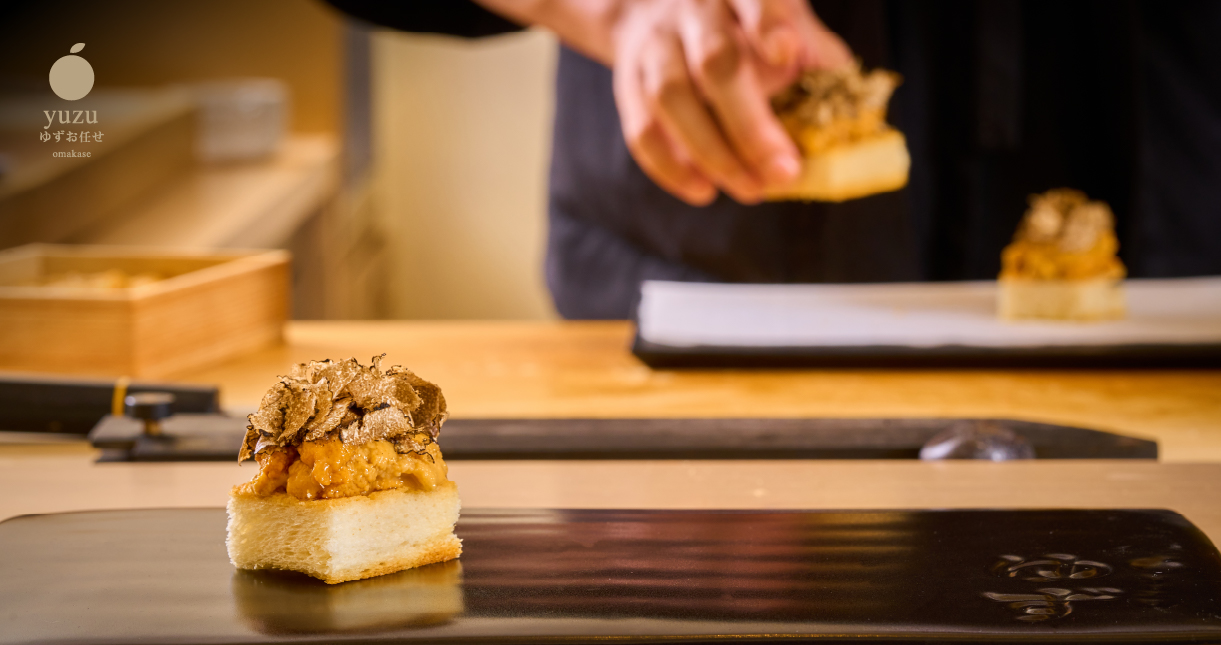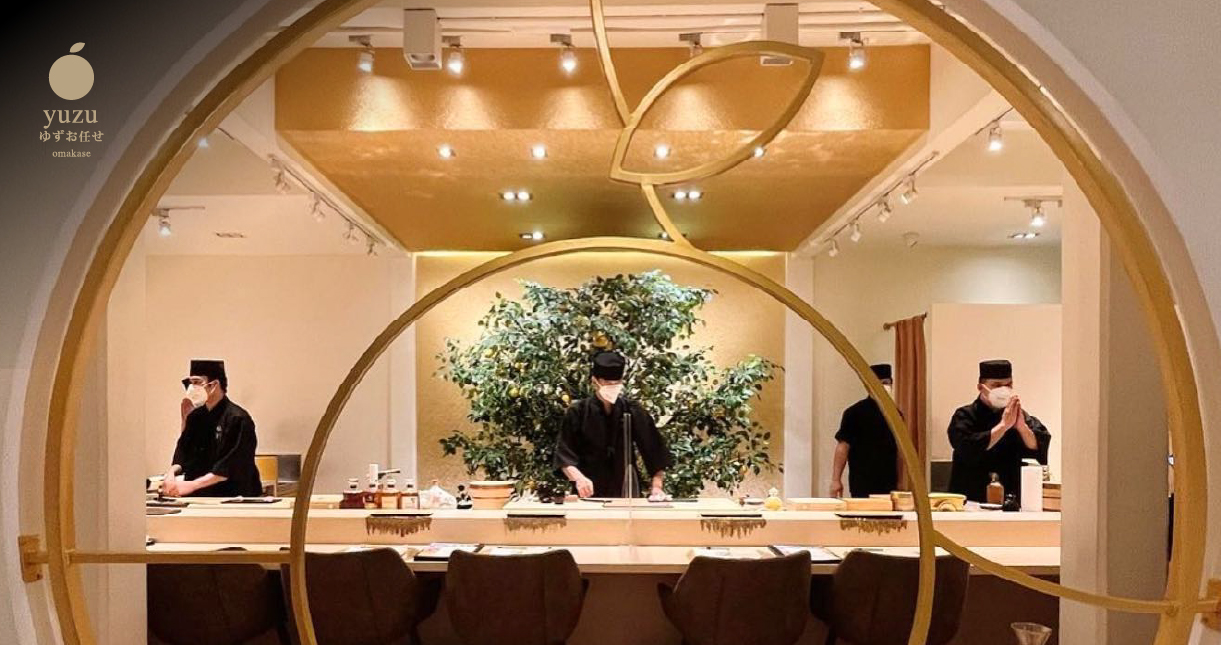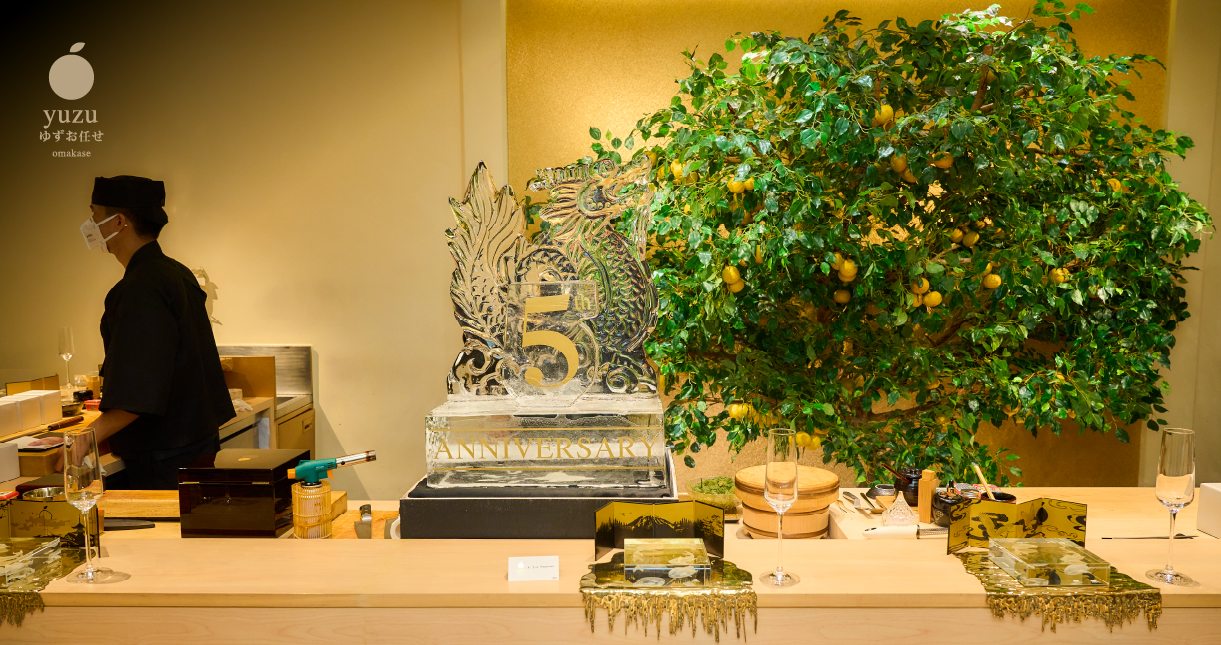
Zen Japanese Restaurant Design: The Aesthetic That Has Captivated the World
The Global Appeal of Zen Japanese Restaurant Design In recent years, Zen-inspired Japanese restaurant design has captured the attention of diners and designers worldwide. Rooted in the principles of minimalism, harmony, and natural beauty, the Zen aesthetic provides a calm and tranquil atmosphere that contrasts the busy and often chaotic world outside. This design philosophy has transcended borders, influencing restaurants around the globe and creating spaces where the simplicity of Japanese culture is reflected in every detail.
The World ● 2024 Oct 30
Zen Japanese Restaurant Design: The Aesthetic That Has Captivated the World
At Yuzu Omakase, we are proud to embody the essence of Zen Japanese restaurant design, where our dining environment creates a peaceful and serene setting for guests. The combination of clean lines, natural materials, and thoughtful layout reflects our dedication to providing a tranquil dining experience that aligns with the principles of Zen. In this article, we’ll explore the global trend of Zen Japanese design and how Yuzu Omakase incorporates these elements to enhance the omakase dining experience.
1. The Essence of Zen: Simplicity and Minimalism

At the heart of Zen design is the principle of simplicity. This design philosophy embraces the idea that less is more, stripping away unnecessary ornamentation and focusing on creating a clean, uncluttered space. In a world where sensory overload is common, the minimalist approach of Zen design offers a refreshing retreat for diners seeking peace and balance.
Clean Lines and Open Spaces
A key element of Zen design is the use of clean lines and open spaces. In a Zen-inspired restaurant, the layout is often designed to promote a sense of flow and openness, allowing guests to move freely and feel a connection to the environment. The simplicity of the design invites diners to focus on the food and the experience, rather than being distracted by overly elaborate decor.
At Yuzu Omakase, our interior design follows this philosophy by incorporating minimalistic elements that create a sense of calm. The clean, uncluttered layout ensures that diners feel at ease, allowing them to fully immerse themselves in the dining experience.
Simplicity Highlight
The minimalistic design at Yuzu Omakase creates an atmosphere of calm and balance, where the focus is on the food and the dining experience, free from distractions.
2. The Use of Natural Materials: Connecting with Nature

A key aspect of Zen Japanese design is the incorporation of natural materials. This connection to nature is essential in creating a harmonious space that evokes a sense of tranquility and grounding. Wood, stone, and bamboo are often used to bring warmth and a tactile quality to the environment, reminding diners of the beauty found in simplicity and the natural world.
Wood, Stone, and Bamboo: A Natural Palette
At Yuzu Omakase, we emphasize the use of natural materials to create a warm, inviting atmosphere that reflects the essence of Zen. The wooden sushi counter is the centerpiece of the restaurant, crafted from smooth, high-quality wood that adds both elegance and simplicity to the space. Stone accents and soft lighting complement the wooden elements, creating a sense of balance and cohesion that is central to the Zen aesthetic.
By using natural materials, Yuzu Omakase connects the dining experience to nature, allowing guests to feel a sense of grounding and peace as they enjoy their meal. This tactile connection to the natural world reinforces the calm and mindfulness that are hallmarks of the Zen design philosophy.
Natural Material Highlight
The use of wood, stone, and bamboo at Yuzu Omakase creates a warm and inviting atmosphere, connecting diners to nature and enhancing the sense of tranquility in the space.
3. Harmony and Balance: The Principles of Zen in Restaurant Layout
In Zen design, harmony and balance are essential concepts that guide both the layout and the overall ambiance of the space. Every element is carefully considered, from the arrangement of the seating to the placement of décor, ensuring that the environment feels balanced and serene. This sense of harmony extends to the dining experience itself, where every detail contributes to a feeling of peace and mindfulness.
Creating Balance Through Design
At Yuzu Omakase, balance is achieved through a thoughtful combination of space, lighting, and textures. The seating arrangement at our sushi counter and tables ensures that diners have both privacy and a sense of community, with enough space between seats to allow for comfortable interaction without intrusion. The soft, ambient lighting enhances the feeling of calm, while the use of natural materials like wood and stone adds warmth and texture to the space.
The flow of the restaurant, from the entrance to the sushi counter, is designed to create a sense of ease and relaxation. Every detail is intentional, from the subtle background music to the minimalist décor, all working together to promote a balanced, harmonious environment.
Balance Highlight
The layout of Yuzu Omakase is carefully designed to create a sense of harmony and balance, ensuring that guests feel relaxed and at ease throughout their dining experience.
4. The Global Influence of Zen Japanese Design
While Zen design has its roots in Japanese culture, it has become a global phenomenon, influencing the design of restaurants and homes around the world. The appeal of Zen design lies in its ability to create a space that feels both modern and timeless, offering a peaceful retreat from the fast-paced world outside. This global trend speaks to a growing desire for simplicity, mindfulness, and connection to nature in both dining and daily life.
The Rise of Zen-Inspired Restaurants Worldwide
Across the globe, many high-end restaurants and dining establishments have embraced Zen-inspired design to create a serene and luxurious atmosphere for guests. From New York to Paris, Tokyo to Bangkok, the principles of minimalism, natural materials, and harmony have become the hallmark of fine dining environments that seek to elevate the experience beyond just the food.
At Yuzu Omakase, we take pride in being part of this global trend, offering our guests an authentic Zen dining experience that aligns with the principles of Japanese design while meeting the expectations of modern, discerning diners. Our restaurant’s design not only enhances the aesthetic appeal but also plays a critical role in creating the perfect environment for our omakase dining experience.
Global Trend Highlight
Zen Japanese restaurant design has influenced restaurants around the world, including Yuzu Omakase, where the principles of minimalism and harmony enhance the overall dining experience.
5. Enhancing the Omakase Experience Through Zen Design

The Zen design philosophy at Yuzu Omakase is not just about aesthetics—it plays an integral role in the omakase experience itself. By creating a peaceful, harmonious environment, the restaurant’s design allows diners to fully engage with the culinary journey presented by the chef. The calm, serene setting encourages mindfulness, helping guests savor each dish and appreciate the craftsmanship behind every course.
A Mindful Approach to Dining
At Yuzu Omakase, our Zen-inspired design promotes a mindful dining experience, where guests are encouraged to focus on the present moment and the artistry of each dish. The clean, uncluttered environment creates a sense of mental clarity, allowing diners to fully appreciate the flavors, textures, and visual presentation of the omakase menu. The design complements the experience, elevating it beyond a simple meal into a form of meditation and sensory engagement.
By embodying the principles of Zen, Yuzu Omakase provides a dining experience that is both elegant and relaxing, where guests can escape the busy world outside and immerse themselves in a world of culinary and visual harmony.
Omakase Experience Highlight
The Zen design at Yuzu Omakase enhances the omakase experience by promoting mindfulness and creating a serene atmosphere that allows guests to fully appreciate each course.
Conclusion: Yuzu Omakase—Where Zen Design Meets Culinary Excellence

The Zen Japanese design at Yuzu Omakase creates more than just a beautiful environment—it fosters an atmosphere of calm, balance, and mindfulness that perfectly complements the omakase dining experience. By embracing the principles of simplicity, natural materials, and harmony, our restaurant offers a peaceful retreat from the outside world, where guests can enjoy a meal that engages all the senses.
In a world that often feels fast-paced and chaotic, Yuzu Omakase invites diners to slow down, savor the moment, and appreciate the artistry of Japanese cuisine in a setting that embodies the timeless beauty of Zen design.
Ready to experience the perfect harmony of Zen-inspired dining? Book your seat online at Yuzu Omakase and discover how we blend the principles of Zen design with the finest in omakase cuisine.

RELATE







